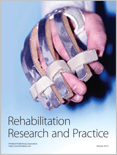
Rehabilitation Research and Practice
Scope & Guideline
Pioneering Insights in Rehabilitation Science.
Introduction
Aims and Scopes
- Clinical Rehabilitation Techniques:
The journal emphasizes empirical studies on clinical rehabilitation techniques, including physical therapy, occupational therapy, and innovative assistive technologies. - Functional Assessment Tools:
Research on the development, validation, and application of functional assessment tools is a core focus, aiding in the effective measurement of patient outcomes. - Patient-Centered Care:
Studies that explore patient experiences, barriers to care, and the impact of rehabilitation on quality of life are essential components of the journal's scope. - Interdisciplinary Approaches:
The journal promotes interdisciplinary collaboration in rehabilitation research, highlighting the importance of teamwork among healthcare professionals. - Emerging Technologies in Rehabilitation:
There is a consistent focus on the integration of emerging technologies, such as virtual reality and robotics, into rehabilitation practices.
Trending and Emerging
- Virtual Reality Applications:
The use of virtual reality as both an intervention and diagnostic tool is gaining traction, highlighting its potential to enhance rehabilitation practices and patient engagement. - Interprofessional Collaboration:
Research emphasizing the experiences and outcomes of interprofessional collaboration in rehabilitation settings is increasing, showcasing the importance of diverse healthcare teams in improving patient care. - Innovative Assistive Devices:
There is a noticeable rise in studies focusing on the development and efficacy of innovative assistive devices, such as soft robotic gloves and orthotics, which aim to improve functional outcomes for patients. - Culturally Adapted Rehabilitation Tools:
The adaptation and validation of rehabilitation tools for diverse populations are emerging as critical themes, reflecting the need for culturally sensitive practices in rehabilitation. - Telehealth and Remote Rehabilitation:
The exploration of telehealth solutions and remote rehabilitation strategies is trending, particularly in the context of the COVID-19 pandemic, demonstrating a shift towards accessible care models.
Declining or Waning
- Traditional Rehabilitation Protocols:
Research focusing on conventional rehabilitation protocols without innovative enhancements is becoming less prominent, as there is a move towards more personalized and technology-integrated approaches. - General Population Studies:
Studies that examine rehabilitation in broad, non-specific populations are declining, as the journal increasingly prioritizes targeted research addressing specific conditions or demographic groups. - Longitudinal Studies without Technological Integration:
Longitudinal studies that do not incorporate modern assessment tools or technological innovations are less frequently published, indicating a shift towards more dynamic and modern research methodologies.
Similar Journals
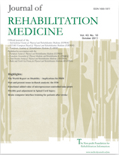
JOURNAL OF REHABILITATION MEDICINE
Elevating Patient Care Through Accessible KnowledgeJOURNAL OF REHABILITATION MEDICINE, published by the FOUNDATION REHABILITATION INFORMATION in Sweden, stands as a leading platform for the dissemination of groundbreaking research in the field of rehabilitation. With an impact factor that places it in the Q1 category for Physical Therapy and Rehabilitation and a noteworthy Q2 ranking in Sports Science and Medicine (miscellaneous), this journal serves as an essential resource for researchers, clinicians, and students dedicated to improving patient care and rehabilitation outcomes. As an Open Access publication since 2001, it ensures that knowledge is widely accessible, promoting collaborative efforts across the global rehabilitation community. Aiming to bridge the gap between research and clinical practice, the journal covers a comprehensive range of topics, providing a vital forum for innovative studies that advance the understanding and effectiveness of rehabilitation therapies. As it approaches its convergence into 2024, the JOURNAL OF REHABILITATION MEDICINE continues to be a cornerstone for all those committed to advancing rehabilitation sciences.
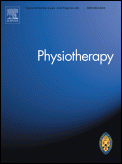
Physiotherapy
Empowering Professionals with Cutting-Edge KnowledgePhysiotherapy, published by Elsevier Science Ltd, stands as a prestigious journal in the field of Physical Therapy, Sports Therapy, and Rehabilitation. Since its inception in 1945, this journal has been committed to advancing the practice and science of physiotherapy through rigorous peer-reviewed research, making significant contributions to both clinical practice and academia. With an impressive Q1 ranking and a Scopus percentile of 88th, it is widely regarded as a leading source of evidence-based information for professionals and researchers alike. The journal operates without an Open Access option, which ensures that it maintains the quality and integrity of the research it publishes while providing exclusive access to valuable insights for its subscribers. By focusing on diverse topics within its scope, including therapeutic techniques, rehabilitation strategies, and sports medicine, Physiotherapy continues to shape the future of physiotherapy practice and education, making it an essential resource for anyone invested in this dynamic field.
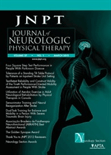
Journal of Neurologic Physical Therapy
Innovating Care for Neurologic RehabilitationJournal of Neurologic Physical Therapy, published by Lippincott Williams & Wilkins, stands as a premier resource in the field of physical therapy with a specific focus on neurology. With an ISSN of 1557-0576 and an E-ISSN of 1557-0584, this journal serves as a vital platform for researchers, practitioners, and students from 2004 to 2024, illustrating its commitment to advancing knowledge in neurologic rehabilitation. It holds a prestigious Q1 ranking in categories such as Physical Therapy, Sports Therapy, and Rehabilitation and Rehabilitation, alongside Q2 rankings in Geriatrics and Gerontology, Medicine (Miscellaneous), and Neurology (Clinical). With an impact factor that reflects its significance, the journal hosts comprehensive studies and clinical insights that propel practice and innovation in neurologic physical therapy. The content is designed to enhance understanding and skills, making it an indispensable resource for those dedicated to improving patient care and outcomes in this critical area of health.

International Journal of Sports Physical Therapy
Inspiring breakthroughs in physical therapy and sports medicine.Welcome to the International Journal of Sports Physical Therapy, a premier platform dedicated to advancing the field of sports therapy and rehabilitation. Published by the NORTH AMER SPORTS MEDICINE INST-NASMI, this open access journal has been vital in disseminating state-of-the-art research since its inception in 2011. With an ISSN of 2159-2896, it boasts a commendable standing within the academic community, achieving a Q2 ranking in 2023 across multiple categories, including Orthopedics and Sports Medicine, Physical Therapy, and Rehabilitation. Spanning diverse topics relevant to sports physical therapy, this journal serves as an invaluable resource for researchers, clinicians, and students alike, promoting best practices and innovative techniques in the field. By maintaining a commitment to high-quality peer-reviewed content, it not only contributes significantly to the existing body of knowledge but also fosters collaboration among professionals seeking to enhance patient care and rehabilitation outcomes.

European Journal of Physical and Rehabilitation Medicine
Empowering Therapists: Unveiling Cutting-Edge Rehabilitation ResearchWelcome to the European Journal of Physical and Rehabilitation Medicine, the premier peer-reviewed journal focusing on advancements in the fields of physical therapy, sports therapy, and rehabilitation. Published by EDIZIONI MINERVA MEDICA, this journal has established itself as a leading resource since its inception in 2008, now enjoying an impressive Q1 ranking in these disciplines according to 2023 metrics. With an emphasis on rigorous research and innovative clinical practice, the journal facilitates the dissemination of high-quality, evidence-based studies, contributing to the enhancement of patient care and therapeutic strategies. As an Open Access platform since 2022, the journal widens its reach, enabling researchers, clinicians, and students across the globe to access valuable insights without barriers. Residing in Italy, the journal's focus transcends regional confines, engaging a vibrant international community aimed at improving rehabilitation outcomes. Join us in exploring the latest developments that shape the future of rehabilitation sciences.

Journal of Pediatric Rehabilitation Medicine
Empowering Children Through Innovative Rehabilitation ResearchJournal of Pediatric Rehabilitation Medicine is a leading academic platform published by IOS PRESS, dedicated to advancing knowledge in the fields of pediatrics, rehabilitation, and physical therapy. With an ISSN of 1874-5393 and an E-ISSN of 1875-8894, this journal has carved a niche within the biomedical community, focusing on therapeutic innovations and evidence-based practices in pediatric rehabilitation. Recognized for its scholarly contributions, it holds a prestigious Q3 ranking in Pediatrics and Q2 rankings in both Physical Therapy and Rehabilitation categories, indicating its impact and relevance in the respective fields. Operating out of the Netherlands, the journal provides a comprehensive open access model that ensures that research is easily accessible to professionals, students, and researchers alike. With converged years spanning from 2007 to 2024, the journal continues to be an essential resource for those dedicated to enhancing the quality of life for children with disabilities and rehabilitation needs, fostering collaboration between clinicians and researchers through high-quality research dissemination.
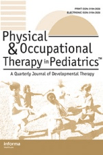
PHYSICAL & OCCUPATIONAL THERAPY IN PEDIATRICS
Transforming pediatric therapy with evidence-based solutions.PHYSICAL & OCCUPATIONAL THERAPY IN PEDIATRICS is a leading academic journal published by Taylor & Francis Inc, focusing on the dynamic fields of pediatric therapy and rehabilitation. With a distinguished history spanning from 1981 to 2024, this journal provides researchers, practitioners, and students with critical insights and advancements in physical and occupational therapy tailored to the unique needs of children. Renowned for its high impact factor and strong rankings, including Q1 in Occupational Therapy and impressive placements in related health categories, it serves as a vital resource for evidence-based practices. Although it operates on a subscription basis, the journal's commitment to advancing knowledge in rehabilitation methods promotes improved health outcomes for children, making it indispensable for professionals dedicated to pediatric care and therapy.
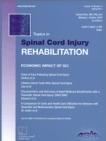
Topics in Spinal Cord Injury Rehabilitation
Transforming Rehabilitation for a Brighter TomorrowTopics in Spinal Cord Injury Rehabilitation is a premier journal dedicated to advancing research and clinical practices in the field of spinal cord injury rehabilitation. Published by the American Spinal Injury Association, this journal focuses on providing up-to-date insights and innovative strategies to enhance recovery and quality of life for individuals with spinal cord injuries. With an impressive trajectory from 1998 to 2024, it is recognized within the Q2 category for Neurology (clinical), Physical Therapy, Sports Therapy and Rehabilitation, and Rehabilitation as of 2023. Although the journal is not open access, it remains a critical resource for healthcare professionals and researchers, boasting a solid impact in the Scopus rankings that positions it among the top quartiles in its categories. Researchers, clinicians, and students alike will find invaluable knowledge within its pages, supporting the ongoing evolution of therapeutic approaches and rehabilitation methodologies. For subscriptions and more details, contact AMER SPINAL INJURY ASSOC at 9702 Gayton Rd, Suite 306, Richmond, VA 23238, United States.

Frontiers in Rehabilitation Sciences
Pioneering research that shapes the future of rehabilitation.Frontiers in Rehabilitation Sciences, published by FRONTIERS MEDIA SA, is an innovative open-access journal that has been committed to advancing the discipline of rehabilitation science since its inception in 2021. The journal aims to serve as a platform for researchers, clinicians, and students interested in disseminating high-quality research and insights that drive practice and policy in rehabilitation and physical therapy. With an E-ISSN of 2673-6861, it fosters interdisciplinary collaboration, tackling topics that range from therapeutic interventions to sports rehabilitation and beyond. As part of the Frontiers family, the journal employs cutting-edge open-access policies that ensure widespread dissemination and visibility of research findings. Although it is currently ranked within the lower quartiles based on Scopus rankings, the journal provides an invaluable opportunity for emerging scholars to publish their work in a rapidly evolving field. By sharing knowledge and fostering dialogue among scientists and practitioners alike, Frontiers in Rehabilitation Sciences plays a crucial role in shaping the future of rehabilitation methodologies and improving patient outcomes.
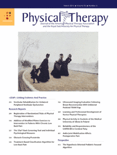
Physical Therapy
Exploring New Frontiers in Rehabilitation and Sports Therapy.Physical Therapy is a leading journal in the field of rehabilitation sciences, published by Oxford University Press Inc. Renowned for its rigorous peer-reviewed articles, the journal covers a broad range of topics within physical therapy, sports therapy, and rehabilitation, making it a vital resource for researchers, clinicians, and students. With an impressive impact factor and ranking—Q1 in its category (Physical Therapy, Sports Therapy and Rehabilitation) and ranked 19 out of 247 in Scopus—this journal stands at the forefront of advancing knowledge and practice in this vital health discipline. The journal has maintained its dedication to publishing original research, systematic reviews, and clinical studies since its inception in 1964, contributing significantly to evidence-based practices in the field. With a commitment to enhancing patient care and fostering professional development, Physical Therapy remains an essential platform for the dissemination of cutting-edge research and innovative therapeutic techniques.